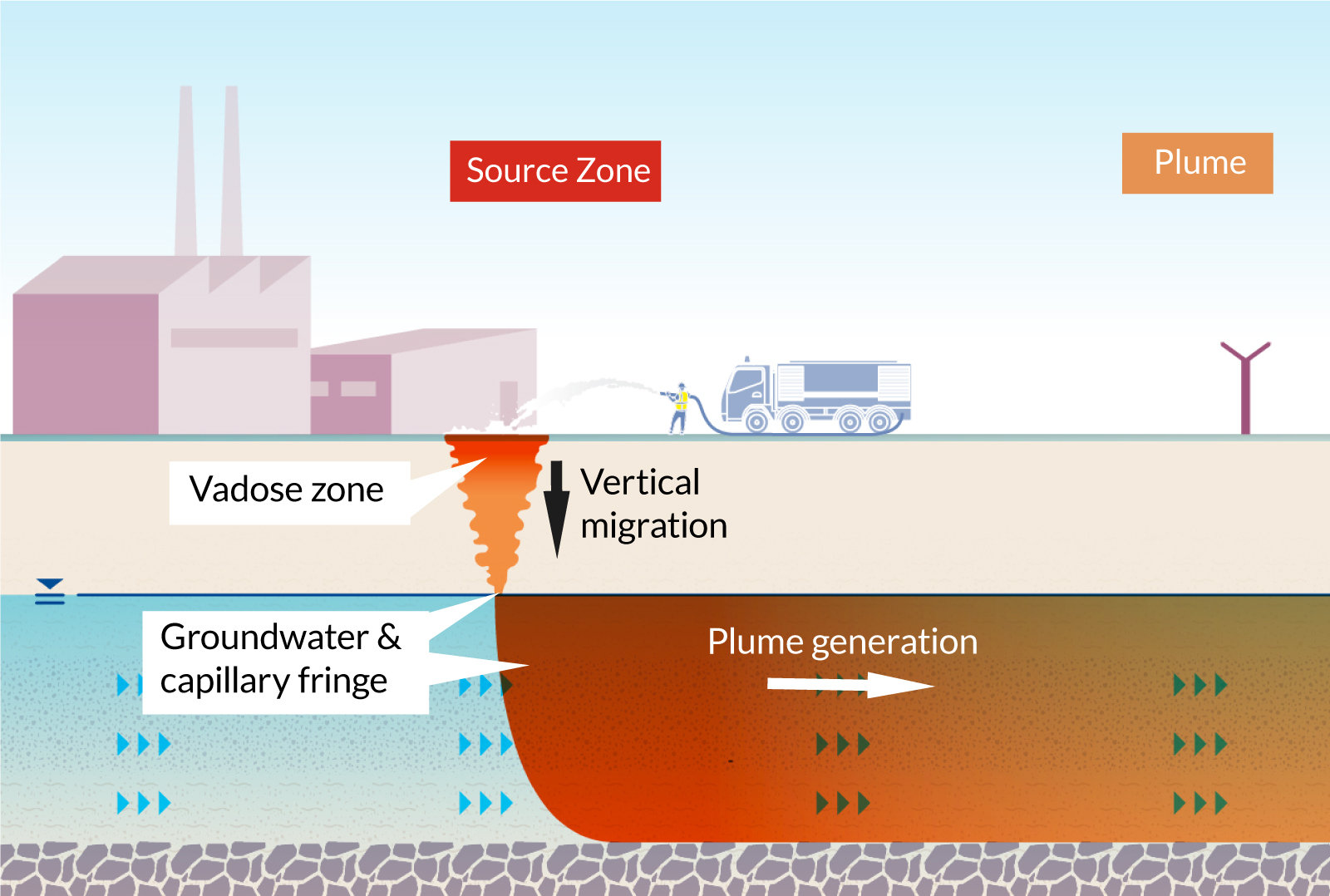Advanced Methods for Reliable PFAS Contamination Elimination
The consistent obstacle of PFAS contamination requires the expedition of sophisticated removal approaches that can efficiently resolve these hazardous substances. Cutting-edge technologies, such as advanced oxidation procedures and various adsorption strategies, have emerged as appealing remedies in mitigating PFAS from influenced atmospheres.
Recognizing PFAS Qualities
Although per- and polyfluoroalkyl substances (PFAS) have been extensively used in various industrial and consumer items as a result of their special residential properties, their perseverance in the environment presents significant challenges to public health and security. PFAS are a team of synthetic chemicals identified by a carbon-fluorine bond, among the toughest chemical bonds known, which adds to their outstanding stability and resistance to degradation. This stability enables PFAS to collect in the environment and living microorganisms, causing possible negative wellness results.
The hydrophobic and oleophobic nature of PFAS makes them particularly efficient in applications such as non-stick coatings, stain-resistant fabrics, and firefighting foams. These exact same residential properties contribute to their ecological perseverance, as PFAS do not conveniently break down through natural procedures. Their prevalent usage has actually led to ubiquitous contamination of water sources and soils, making complex removal initiatives. Understanding the chemical properties of PFAS is essential for creating efficient techniques to manage and alleviate their environmental impact. The one-of-a-kind attributes of these compounds necessitate a nuanced method to deal with the difficulties postured by their presence in ecosystems and potential human exposure.
Cutting-edge Removal Technologies
The determination of PFAS in the setting has stimulated the development of innovative remediation technologies intended at successfully eliminating these contaminants from influenced ecosystems. Among the most encouraging methods are sophisticated oxidation procedures (AOPs), which make use of powerful oxidants to damage down PFAS substances into less dangerous materials. AOPs can be customized to target certain PFAS structures, boosting their effectiveness.
One more arising technology is using adsorption media, such as turned on carbon and ion exchange resins, which can selectively capture PFAS from infected water. These products have revealed significant removal effectiveness, although routine replacement and regrowth are required to maintain efficiency.
Membrane layer filtering methods, including reverse osmosis and nanofiltration, are additionally obtaining grip in PFAS remediation. These techniques can effectively divide PFAS from water, offering a practical option for treating infected resources. Furthermore, thermal treatment techniques, such as incineration, can decay PFAS into safe byproducts, though they need careful monitoring to control discharges.
Jointly, these cutting-edge removal innovations stand for substantial innovations in the ongoing fight versus PFAS contamination, providing different techniques to restore afflicted atmospheres and secure public wellness.

Bioremediation Methods
Bioremediation methods use a promising approach to attending to PFAS contamination by taking advantage of the all-natural capacities of microorganisms to degrade these relentless substances (m270 waste management). This approach entails making use of microorganisms, fungi, and various other microbes that can metabolize or change PFAS substances into much less damaging by-products
Recent innovations in molecular biology and ecological microbiology have improved our understanding of microbial communities and their potential roles in PFAS degradation. Researchers are actively discovering specific pressures of bacteria, such as Pseudomonas and Bacillus, which have actually demonstrated the capacity to damage down particular PFAS substances.
In situ bioremediation techniques, where microbes are stimulated directly in infected environments, can be especially effective. This strategy often includes the application of nutrients or electron donors to advertise microbial growth and task. Additionally, ex-spouse situ methods, such as bioreactors, permit regulated problems that can maximize deterioration prices.
Despite the assurance of bioremediation, challenges continue to be, including the complex nature of PFAS compounds and the requirement for extensive field testing - m270 waste management. Continued r & d will be vital to fine-tune these techniques and examine their performance in varied ecological contexts
Adsorption and Filtration Methods
Attending to PFAS contamination usually entails employing adsorption and filtration methods, which are developed to eliminate these consistent chemicals from water and soil. Among the various methods, activated carbon adsorption is extensively utilized because of its high surface area and porosity, making it possible for reliable trapping of PFAS molecules. Granular activated carbon (GAC) systems are specifically favored read review for dealing with huge quantities of contaminated water, while powdered triggered carbon (PAC) can be made use of for smaller-scale applications.
Ion exchange materials additionally reveal pledge in PFAS elimination, functioning by exchanging PFAS ions with much less dangerous ions in the water. This approach has demonstrated efficiency in focusing PFAS compounds, promoting their subsequent elimination. Additionally, membrane layer filtration strategies, such as reverse osmosis and nanofiltration, run by using semi-permeable membranes to different PFAS from water, successfully decreasing their concentrations.
While these approaches work, they must be thoroughly selected based Click Here on the details PFAS compounds existing and the environmental context. Continuous improvements in materials science and design are resulting in the development of unique adsorbents and filtering systems that improve removal performances and decrease operational costs, therefore boosting overall removal initiatives.
Regulatory and Policy Factors To Consider
Exactly how can reliable governing structures enhance the management of PFAS contamination? Detailed policies are vital to ensure a worked with and durable response to the challenges presented by per- and polyfluoroalkyl materials (PFAS) Regulations can establish clear guidelines for surveillance, reporting, and remediating PFAS-contaminated sites, promoting liability amongst sectors and public entities. (m270 waste management)

Furthermore, monetary motivations and gives can be incorporated right into policies to motivate the adoption of sophisticated removal modern technologies. Policymakers ought to likewise prioritize research and growth, making sure that emerging methods for PFAS removal are confirmed and implemented efficiently.
Additionally, public understanding and interaction are essential elements of any type of regulative strategy, equipping neighborhoods to advocate for their health and wellness and security. Inevitably, a well-structured governing setting will not only improve the management of PFAS contamination but also advertise sustainable techniques that protect future generations.
Final Thought
In recap, the intricacy of PFAS contamination necessitates the adoption of advanced remediation techniques. Proceeded research and growth in important source this area remain vital to resolving the challenges positioned by PFAS contamination.
 Tony Danza Then & Now!
Tony Danza Then & Now! Judge Reinhold Then & Now!
Judge Reinhold Then & Now! Brandy Then & Now!
Brandy Then & Now! Danica McKellar Then & Now!
Danica McKellar Then & Now! Justine Bateman Then & Now!
Justine Bateman Then & Now!